17 Sep
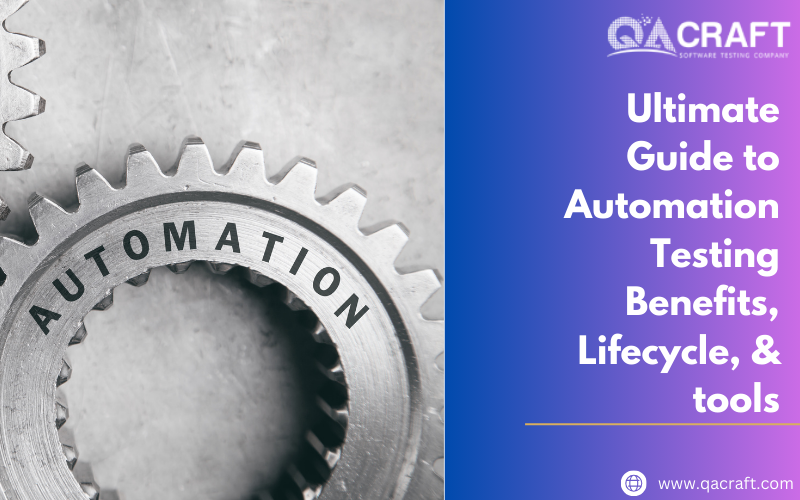
Automation testing accelerates releases, enhances confidence, as well as lessens human error. This guide explains the reasons behind the use of automation in teams, a lifecycle you must follow, the brief tool selections, along brief notes so you can decide on a suitable tool.

Why Automation Testing?
- Less turnaround time: Run big suites in minutes rather than days.
- Stable results: repeatability in tests limits wobbly human tests.
- Scalability: Automatically run on browsers, devices, and environments.
- Greater ROI: Spend less time in QA on repetitive checks to allow teams to spend time on exploratory testing and edge cases.
Read More: What Is Automation Testing?
Key benefits
- Quickened releases: Automate regression suites to reduce release cycles.
- Greater precision: Do away with the validation done by humans.
- Cross-platform coverage: Run the same tests on a large number of OS/browser/device combinations.
- Continuous testing: CI/CD combines to highlight problems at an earlier stage.
- Reusability and maintainability. Reusable scripts and test data enable growth to be controlled.
Lifecycle of automation testing pragmatics.
- The identification of automation candidates – the emphasis is placed on high-value and repetitive tests: smoke, regression, and critical flows.
- Define scope/success criteria – what to automate, pass/fail level, test data requirements.
- Select the appropriate tool(s)- consider the type of app (web/mobile/API), team expertise, and budget.
- Tests of design – conform to Page Object Model or BDD-style because it makes sense.
- Build CI/CD pipelines – perform PRs, Nightly, and Release Gate tests.
- Execute and report -good, reliable reports, screenshots, videos, and logs in case of failure.
- Maintain — plan refactors; sustain locators; fix flakiness first.

The selection of an automation testing tool- a quick checklist.
- Application type: web, mobile, desktop, API.
- Team skills: Is it better to use code-first (Selenium) or low-code/no-code (Katalon/Testsigma/ACCELQ)?
- Scale of execution: local vs cloud/grid (LambdaTest of scale).
- CI/CD & reporting: pipeline integrations, test reporting formats.
- Licensing & price: open source vs privatized.
- Support and community: vendor or active community support.
- Execute and report – consist of good reporting, screenshots, videos, and logs of failures.
- Maintain — plan refactors; ensure locators are robust; focus on flakiness fixes.4
Top tools
Selenium
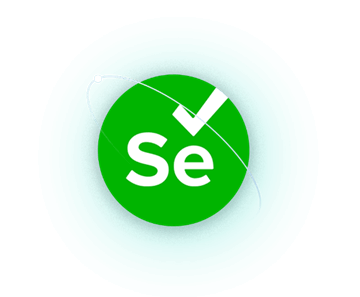
Selenium is a free web browser automation library and framework. It offers WebDriver bindings in various languages and allows teams to drive browsers in a programmable way, so that they can test functions and regression tests in Chrome, Firefox, Edge, and others. The selenium itself as a product is concentrated on the browser control; the teams usually attach it to the test framework (JUnit, pytest, Mocha, etc.), reporting tool, and CI integration in order to create a complete solution.
Read More: What Is Selenium Testing?
Appium

Appium is an open-source automation framework for mobile apps written in the WebDriver protocol, to communicate with iOS and Android applications (native, hybrid, and mobile-web). Appium also allows you to use Selenium/WebDriver to automate mobile apps and allows a variety of languages and test runners, which is appropriate for both functional and end-to-end mobile testing.
Katalon Studio
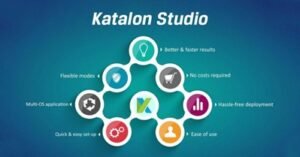
Katalon Studio is a combined test automation where provides low-code UI with scripting in intricate flows. It supports web, mobile, API, and desktop automation and has an in-built test management, reporting, and object repositories; these are useful as they allow a team to quickly onboard business testers, yet still have scripting capability in the hands of engineers.
Testsigma
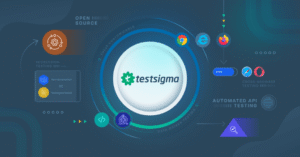
TestSigma is a low-code, cloud-based test automation tool whose test creation is based on natural-language test creation (plain English) and offers cloud execution and test scheduling, and test data management. It seeks to automate the non-developers and increase the speed of test coverage by simplifying the process of test authoring and orchestration.
TestComplete

TestComplete is a commercial UI test automation utility, which has record-and-playback capability together with scripting (JavaScript, Python, VBScript) and advanced object recognition of desktop and web applications. It offers high-quality debugging, visual test development, and enterprise capability to support large test suites.
Testim
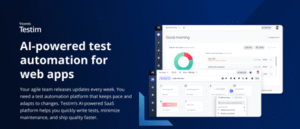
Testim is an AI-based test automation system that assists in writing and maintaining UI tests as it applies machine learning to come up with more stable selectors and faster testing authoring. It offers a graphical testing platform and combines with CI/CD to quickly, dependably conduct UI testing.
ACCELQ
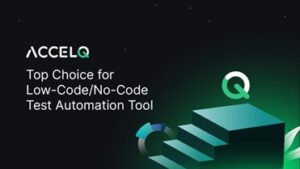
ACCELQ is a codeless and model-based test automation and orchestration platform that focuses on collaboration, test data management, and traceability. It allows the teams to model test flows at a more abstract level (models) and generates and executes at web, API, and mobile layers.
LambdaTest
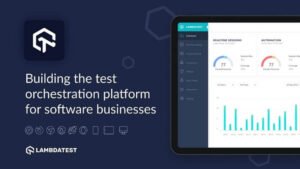
LambdaTest is another cloud testing service that offers an on-demand array of cross-browser and cross-device testing utilizing browsers, OS, and real devices. It can be used with Selenium and Appium and provides parallel execution, CI/CD integrations, and debugging systems to accelerate compatibility testing.
Postman

Postman is an API development and testing tool to create requests, group requests into collections, and run them either manually or in automated pipelines via Newman. It is commonly applied to exploratory API testing, automated API regression suites, and contract testing workflows.
Quick pros & cons
| Tool | Pros | Cons |
| Selenium | Open-source; wide language bindings (Java, Python, JS, C#); extremely flexible and extensible; huge community and ecosystem. | No built-in test runner/reporting (needs framework); higher engineering effort to design stable frameworks; maintenance overhead. |
| Appium | Open-source mobile automation using the WebDriver protocol; reuses Selenium knowledge; supports native, hybrid, and mobile-web apps. | Mobile device environment setup can be complex; flakiness on real devices; slower execution vs some cloud device farms without tuning. |
| Katalon Studio | Low-code + scriptable; supports Web/Mobile/API/Desktop; built-in reports and object repository. | Some advanced features require a paid tier; less flexible than raw-code frameworks for very custom flows. |
| Testsigma | Natural-language, low-code test creation; cloud execution and data-driven tests; good for non-dev testers. | Reduced control for complex custom logic; vendor cost for advanced usage. |
| TestComplete | Strong object recognition across technologies; GUI record/playback + scripting; good debugging and enterprise features. | Commercial license; can create monolithic tests if not modularized; Windows-centric tooling historically. |
| Testim | AI-assisted locators to reduce flakiness; fast test authoring; decent visual editor. | Vendor cost: complex edge cases still need custom scripting. |
| ACCELQ | Model-based, codeless automation; strong orchestration and collaboration features; test-data handling. | Commercial; model-based approach has a learning curve and an initial setup cost. |
| LambdaTest | Large cloud grid for cross-browser/device tests; integrates with Selenium/Appium and CI/CD. | Cloud cost, local debugging requires tunnels, and dependency on external services. |
| Postman | Excellent for API authoring, exploratory testing, and automation with Newman; easy to create collections and run in CI. | Focused on APIs (not UI); full end-to-end workflows often need a combination with UI frameworks. |
Conclusion
Automation testing is no longer a choice; it is a sensible method of accelerating releases, minimizing human error, and enhancing confidence in all deployments. The correct lifecycle (identify candidates → define scope → choose tools → design → CI/CD → execute/report → maintain) and using the appropriate metrics (pass rate, flakiness, execution time) can help teams transition to reliable, fast feedback loops that can grow with the product.
Choose the tool that fits your team and your objectives: code-first (Selenium, Appium) when you need more control and flexibility; low-code/model-based (Katalon, TestSigma, ACCELQ, TestComplete, Testim) when onboarding is important and business-user involvement is important; and cloud/grid or API (LambdaTest, Postman) specialists when you have to scale or non-UI testing. Begin small – start by automating the most valuable, most repetitive flows, CI/CD fold tests, and consider flakiness a technical debt that can be paid off in the short term.


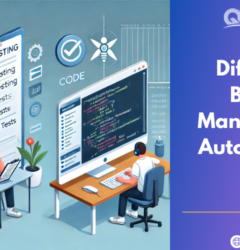

Diksham